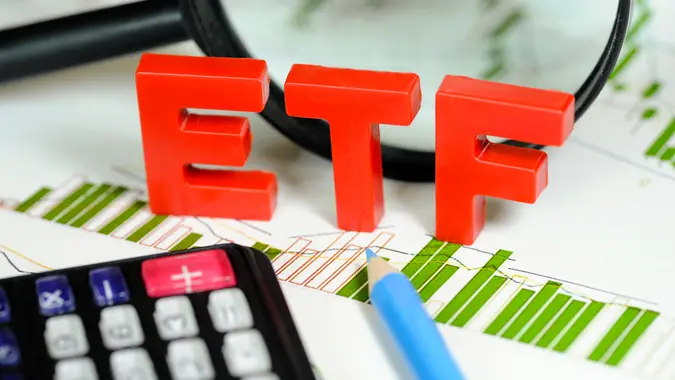What’s the Difference Between Investing and Trading?

Commitment to Our Readers
GOBankingRates' editorial team is committed to bringing you unbiased reviews and information. We use data-driven methodologies to evaluate financial products and services - our reviews and ratings are not influenced by advertisers. You can read more about our editorial guidelines and our products and services review methodology.

20 Years
Helping You Live Richer

Reviewed
by Experts

Trusted by
Millions of Readers
Understanding the distinction between investing and trading is crucial for anyone entering the financial markets, as each approach has different goals, strategies, and risk levels. Here’s a comprehensive look at the key differences to help you decide which approach might suit your financial goals and risk tolerance.
Defining Investing and Trading
Investing: Investing involves buying assets that you believe will increase in value over time. It’s a long-term approach where the investor aims to build wealth gradually through buying and holding stocks, bonds, mutual funds, real estate, and other investment vehicles. The key philosophy behind investing is to participate in the company’s growth and profitability or to benefit from long-term trends in the markets.
Trading: Trading, on the other hand, is more about making short-term profits by buying and selling securities over a shorter period–ranging from several minutes to a few months. Traders often capitalize on market trends and price movements. There are several styles of trading, including day trading, swing trading, and scalping, each requiring a high level of market analysis and expertise.
Investopedia described the difference between investing and trading as, “Investing takes a long-term approach to the markets and often applies to such purposes as retirement accounts. Trading involves short-term strategies to maximize returns daily, monthly, or quarterly.”
Core Differences
- Time Horizon:
- Investors typically hold assets for years or even decades, aiming to benefit from dividends, interest, and capital gains over a long period.
- Traders hold assets for a shorter period as they look to gain from price fluctuations in the market. They may make multiple trades in a single day (day traders) or over weeks (swing traders).
- Risk Tolerance:
- Investing is generally considered less risky, particularly for those who diversify their portfolios across various sectors and asset classes.
- Trading involves higher risk due to the frequent buying and selling of securities, which requires precise market timing and can lead to significant losses.
- Capital Growth vs. Income:
- Investors are typically focused on capital growth; they are more concerned with the long-term appreciation of their investments.
- Traders are focused on generating income from market movements and may not be concerned with the long-term prospects of the holdings.
- Market Analysis:
- Investors often use fundamental analysis to evaluate a company’s future growth prospects, examining financial statements, market sectors, and economic conditions.
- Traders rely more heavily on technical analysis, which involves analyzing statistical trends gathered from trading activity such as price movement and volume.
- Emotional Component:
- Investing requires patience and discipline, as holding investments for a long time can lead to significant fluctuations in market value.
- Trading is more stressful and emotionally taxing because it requires quick decision-making and constant monitoring of the market.
Conclusion
Whether you should invest or trade depends on your financial goals, risk tolerance, investment time horizon, and market knowledge. Investing is suitable for those looking to build wealth gradually without dedicating much time to daily market movements. Trading is better suited for those who can dedicate time to study the markets and manage the emotional ups and downs associated with frequent price volatility. Each approach requires a different set of skills and a different level of involvement in the markets, so choose the strategy that best aligns with your overall financial strategy.
Editor's note: This article was produced via automated technology and then fine-tuned and verified for accuracy by a member of GOBankingRates' editorial team.
More From GOBankingRates
 Written by
Written by  Edited by
Edited by 

























